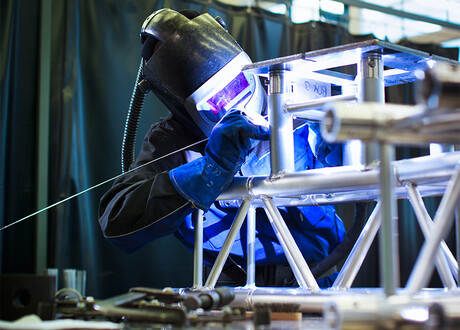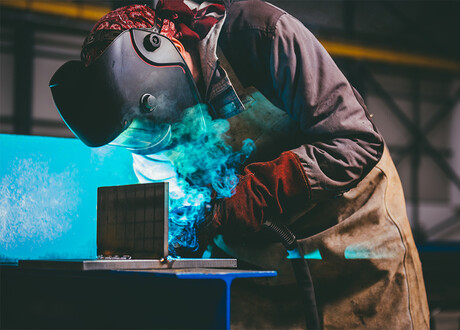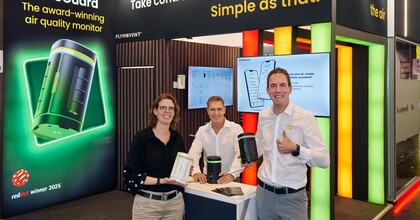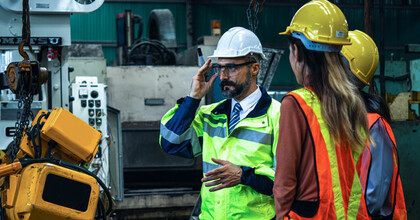Changing the working conditions
Changing the working conditions of welders is a relatively simple way to reduce the risks of welding fumes. Measures that can be taken:
- Restrict working in enclosed and confines spaces as much as possible.
- A different welding sequence, so that the welder is in position where he is not directly breathing the fumes.
- Find out if a welder can do his work while seated. A seated welder will tend to have the least fume around his face.
- The use of turn tables to manipulate the work piece in a way the fume rises away from his face.
Designing the job, so there is less welding
Depending on the particular job, there are numerous options to design the job so that less welding fumes are released. For instance, you can think about:
- Simpler solutions include use of cold jointing techniques. There are numerous mechanical fasteners. (bolts, rivets, etc.) Adhesive technologies have progressed in recent years. Bonded metal structures are used in some new cars. More novel techniques such as friction stir welding can be used for certain applications. There may be other risks associated with friction stir welding, but it produces little or no fume.
- Using thinner gauge material. Thinner gauge material will generally need fewer weld passes or, for sheet metalwork, lower power requirements on the welding set. The less power is used, the less fume is produced.
- Some applications MIG brazing can produce a result with equal physical properties to a full penetration weld, however brazing has the advantage of producing less fume. Many modern welding sets have settings to allow brazing operations so you may not need to replace your welding sets.
Modifying the manufacturing techniques
- Can you use automated or self-propelling weld profilers before parts are formed or have parts added that prevent their use. This can reduce the use of handheld grinders.
- Use of ceramic backing tiles and inert gas backing techniques can reduce the need to back-gouge root pass welds. But pay attention: use of inert gas in these systems may need additional safety measures to prevent risk of asphyxiation.
Using a welding technique that makes less fume
To some extent the amount of welding fumes depends on the welding method. TIG produces the least fume although it does produce significant amounts of ozone and nitrous oxide both of which are gases that can cause irritation. MIG and MAG generally produce quite a lot more fume. MMA (stick) welding and flux cored tend to produce the most fume. If you can automate the arc welding process then submerged arc welding, ‘hot wire’ TIG or perhaps electron beam welding may be practical and cost effective.
Resistance welding generally produces less fume than manual arc welding processes. An example of replacing manual arc welding with resistance welding techniques is the fixing of fairing aids in ship building. These can be fixed using stud welded bolts rather than arc welding the bracket directly to the hull. There is less fume produced when welding the item and less grinding to remove it afterwards.
Optimizing shielding gas
Excessive currents and long duty cycles tend to generate excess fume and can affect weld quality. Optimize your shielding gas so you get the best production speed and the lowest fume emissions. All the major welding gas suppliers produce shielding gases which allow welders to lay down welds faster, produce better quality finishes and reduce fume at the same time. Ask your gas supplier which is the optimum shield gas mix for your application.





